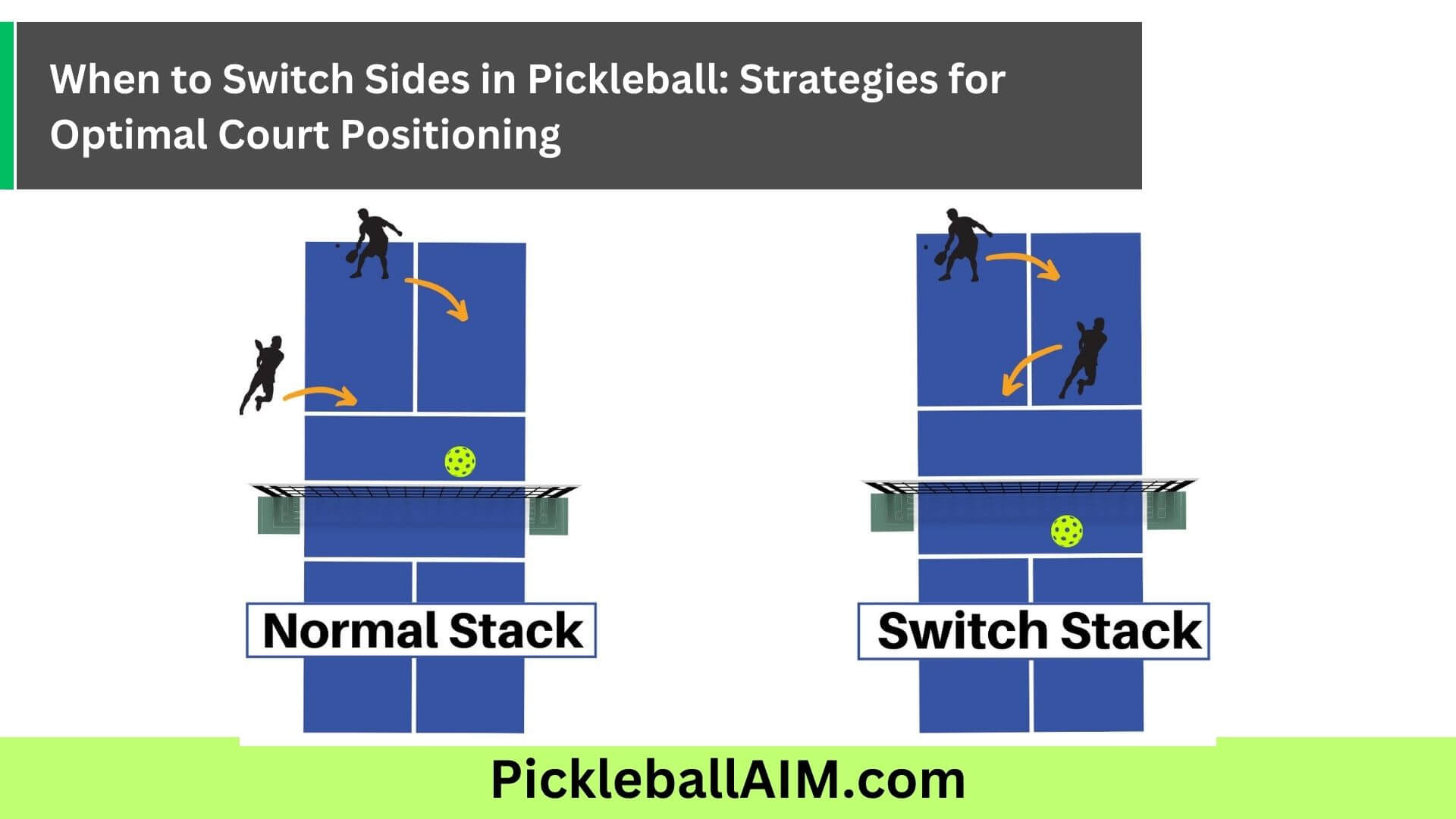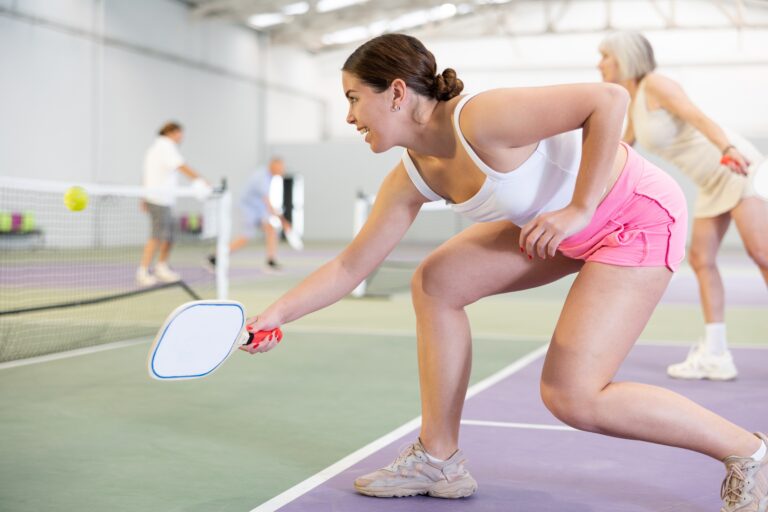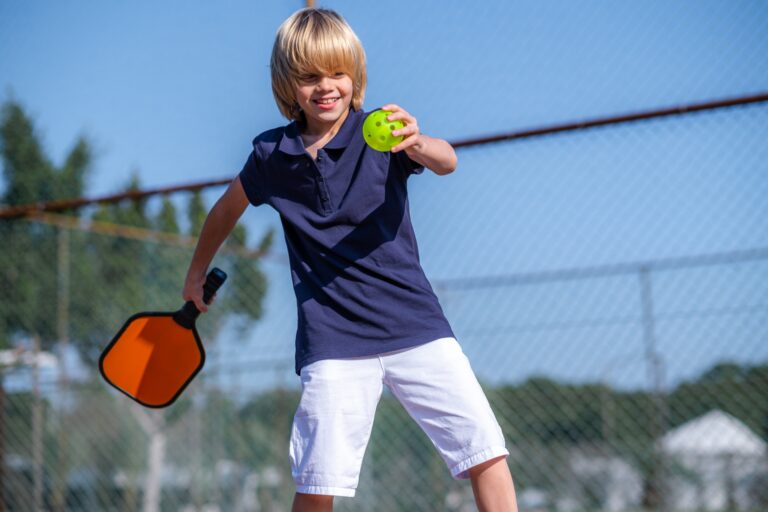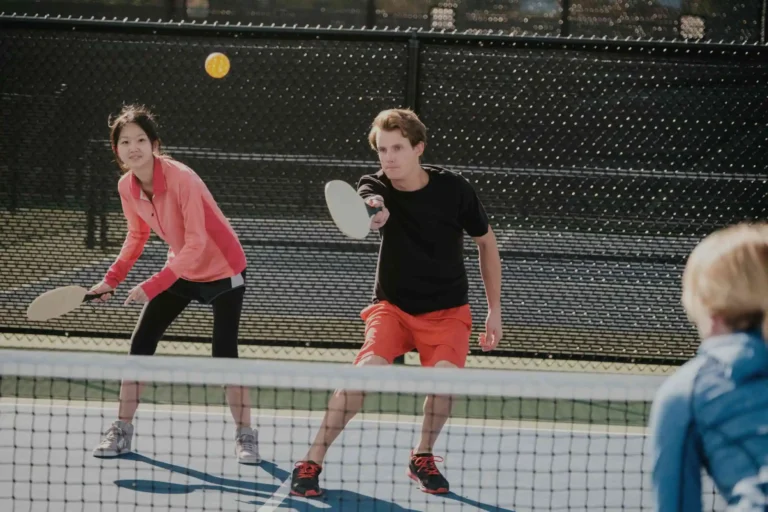When to Switch Sides in Pickleball: Strategies for Optimal Court Positioning
Pickleball, a dynamic and fast-paced sport, requires players to make strategic decisions to gain an advantage over their opponents. One crucial aspect of gameplay is knowing when and how to switch sides on the court effectively. Switching sides strategically can lead to improved court positioning, better shot opportunities, and increased control over the game’s tempo. In this article, we will explore the importance of switching sides in pickleball, the optimal times to do so, and the strategies to implement for a more successful and rewarding playing experience.
Understanding the Significance of Switching Sides
In pickleball, switching sides refers to the intentional movement of players across the court during a rally or in between points. Players often switch sides to adapt to changing situations, gain an advantage, or maintain a balanced court presence. Effective switching not only ensures better court coverage but also allows players to exploit their opponents’ weaknesses and capitalize on their own strengths.
Optimal Times to Switch Sides
- After Every Point: In doubles play, players have the option to switch sides after every point scored. This regular switching ensures that both partners get the opportunity to serve and return from both sides of the court. It helps in acclimatizing to different angles and shot placements, making players well-rounded in their gameplay.
- At 3rd Shot Drop: When initiating the 3rd shot drop strategy, it is common for the serving team to switch sides. The player who executed the drop shot moves to the opposite side, allowing for a better angle to cover the center of the court and prepare for a possible lob return from the opponents.
- When Receiving a Lob: In response to an opponent’s lob shot, players may switch sides to ensure that the player with the stronger overhead smash capability is positioned in the ideal spot to return the lob effectively.
- In Defense of Stronger Opponents: When facing a stronger opponent who consistently targets one player on the receiving team, it can be advantageous to switch sides to neutralize the attack. This strategy helps balance court positioning and reduces the opponent’s advantage.
Strategies for Effective Switching
- Communication: Effective switching requires clear and concise communication between partners. Inform your partner when you plan to switch sides to avoid confusion and maintain proper court coverage.
- Quick Transitions: Switch sides swiftly and efficiently during breaks between points. Avoid delays that may disrupt the game’s rhythm and momentum.
- Maintain Court Balance: When switching sides, ensure that both players maintain an optimal court balance. Position yourselves to cover the corners, middle, and sideline effectively.
- Exploit Weaknesses: Observe your opponents’ weaknesses and adjust your court positioning accordingly. Switch sides strategically to capitalize on their vulnerabilities.
- Adapt to Playing Conditions: Factors like wind direction and sun glare can influence court positioning. Be ready to switch sides to adapt to changing playing conditions and maintain an edge over your opponents.
Advanced Switching Techniques for Competitive Play
For more advanced players seeking to take their switching strategies to the next level, there are additional techniques to consider. These tactics can add layers of complexity to your gameplay and keep opponents guessing:
- The Fake Switch: Use deception to create confusion among opponents. Pretend to switch sides but quickly return to your original position just before the shot is played. This can disrupt your opponents’ timing and lead to unforced errors.
- The Delayed Switch: Instead of immediately switching sides after a point, delay the switch for a few seconds. This delay can catch your opponents off guard, as they may anticipate the switch and prepare for it prematurely.
- The Cross-Court Switch: Switch sides diagonally across the court instead of directly. This can create unexpected angles and open up new shot possibilities, leaving opponents scrambling to defend.
- The Quick Return Switch: After switching sides, rapidly return to your original position if the opponents counter with a fast shot in the opposite direction. This quick reaction can surprise opponents and give you a strategic advantage.
- The Split Step Switch: Implement a split step technique when switching sides, where both players briefly jump and land simultaneously before moving to their new positions. The split step helps maintain balance and agility during the transition.
Adapting to Different Opponents
The effectiveness of switching sides depends on your opponents’ playing styles and strategies. It is essential to be adaptable and recognize when certain switching tactics are more suitable:
- Against Aggressive Opponents: When facing aggressive opponents who frequently attack the net, switching sides can disrupt their rhythm and force them to adjust their shot selection.
- Against Defensive Opponents: When playing against defensive players who stay at the baseline, switching sides can help you find openings in their defense and create opportunities to approach the net.
- Against Quick-Reacting Opponents: Switching sides quickly and employing deceptive techniques can challenge opponents with lightning-fast reflexes, forcing them to make split-second decisions.
Switching Sides in Singles Play
While much of the focus on switching sides pertains to doubles play, it is equally important in singles play. In singles, players don’t have a partner to cover the other side of the court, making court positioning even more critical. Here are some considerations for switching sides in singles play:
- After Every Point: Similar to doubles play, players in singles can switch sides after every point. This helps players adjust to varying court conditions and can be particularly beneficial when serving from different sides.
- Strategic Switching: In singles, switching sides strategically becomes even more vital. Players may choose to switch sides to gain a better angle on their stronger shots or to counteract their opponent’s playing style.
- Exploiting Weaknesses: Assessing an opponent’s weaknesses in singles is crucial. Switch sides to capitalize on their weaker side or shot, forcing them to play to their disadvantage.
- Managing Fatigue: Switching sides can also help manage fatigue in singles play. Players may choose to switch sides to give themselves a brief rest or to disrupt an opponent’s rhythm.
Conclusion
Switching sides in pickleball is a dynamic and strategic element of the game that can significantly impact the outcome of a match. Whether playing in doubles or singles, knowing when and how to switch can provide a competitive advantage, improve court positioning, and keep opponents guessing.
Clear communication with your partner and understanding each other’s playing style are key to successful switching in doubles play. In singles, strategic switching based on opponent analysis and managing fatigue can be game-changing.
As you refine your switching techniques, remember that adaptability and quick decision-making are essential. Regular practice, match experience, and honing your court awareness will elevate your ability to strategically switch sides and excel in the exciting world of pickleball. So, take the initiative, communicate with your partner, and be prepared to seize every opportunity to switch sides strategically and dominate the pickleball court!








2 Comments